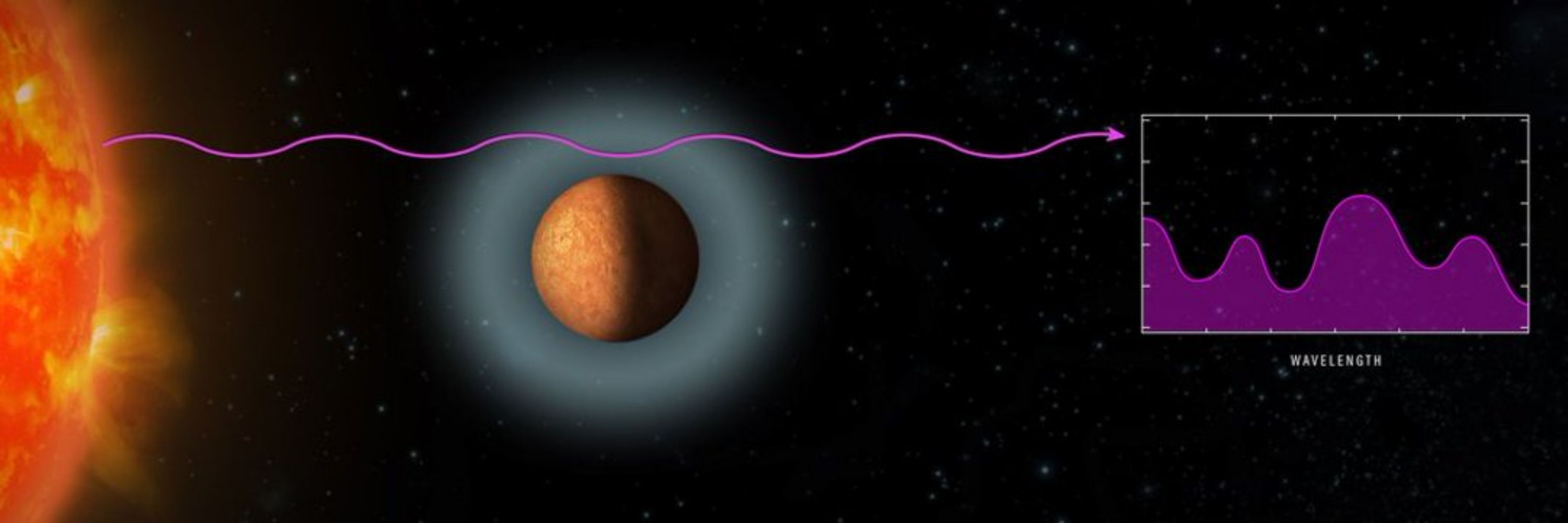
arxiv.org/abs/0803.4089

arxiv.org/abs/0803.4089
Love the front cover transiting planet atmosphere graphic on your thesis!
Love the front cover transiting planet atmosphere graphic on your thesis!
I was fortunate enough to be a postdoc at Cornell with Nikole, and she is a truly *fantastic* advisor and mentor!
I was fortunate enough to be a postdoc at Cornell with Nikole, and she is a truly *fantastic* advisor and mentor!
So if TRAPPIST-1e does indeed have an atmosphere, we will soon have the data to settle the enigma of this world.

So if TRAPPIST-1e does indeed have an atmosphere, we will soon have the data to settle the enigma of this world.
iopscience.iop.org/article/10.3...
So what comes next?

iopscience.iop.org/article/10.3...
So what comes next?
For TRAPPIST-1e, we don't see this behaviour, with the CH4 posterior pushing to include this molecule.
We haven't detected CH4, but future observations can assess this.

For TRAPPIST-1e, we don't see this behaviour, with the CH4 posterior pushing to include this molecule.
We haven't detected CH4, but future observations can assess this.
There's also the important caveat that an incomplete stellar contamination correction could also imprint spectral features.
There's also the important caveat that an incomplete stellar contamination correction could also imprint spectral features.
We found the same solution independently through atmospheric retrievals, which latched onto CH4 absorption as a potential explanation. 🔍
But this is not (yet!) an atmospheric detection.

We found the same solution independently through atmospheric retrievals, which latched onto CH4 absorption as a potential explanation. 🔍
But this is not (yet!) an atmospheric detection.
The figure below (from Glidden+2025) shows the range of excluded partial pressures.
Big takeaway: large CO2 concentrations are unlikely.

The figure below (from Glidden+2025) shows the range of excluded partial pressures.
Big takeaway: large CO2 concentrations are unlikely.
iopscience.iop.org/article/10.3...
Next, we looked for secondary atmospheres.

iopscience.iop.org/article/10.3...
Next, we looked for secondary atmospheres.
Irrespective of the cloud-surface pressure, we find a H2 abundance limit of < 80% (to 3σ). This is a significant improvement over what was possible with Hubble data.

Irrespective of the cloud-surface pressure, we find a H2 abundance limit of < 80% (to 3σ). This is a significant improvement over what was possible with Hubble data.
We then turned to atmospheric models to see if there were any signatures of atmospheric absorption.

We then turned to atmospheric models to see if there were any signatures of atmospheric absorption.
Since:
Observed_spectrum_i = contamination_i * planet_spectrum
The idea is to extract the time-independent (non-GP) common factor caused by any planetary atmosphere.

Since:
Observed_spectrum_i = contamination_i * planet_spectrum
The idea is to extract the time-independent (non-GP) common factor caused by any planetary atmosphere.
Simply put, our stellar models for ultra-cool M-dwarf stars like TRAPPIST-1 don't work 😱
So we had to try something new...

Simply put, our stellar models for ultra-cool M-dwarf stars like TRAPPIST-1 don't work 😱
So we had to try something new...
Our spectra show *huge* wavelength-dependent features that are caused by active regions on the star ✴️

Our spectra show *huge* wavelength-dependent features that are caused by active regions on the star ✴️
This means TRAPPIST-1e can potentially have liquid surface water *if* it has an atmosphere with a sufficient greenhouse effect.
So TRAPPIST-1e was a priority target for JWST.

This means TRAPPIST-1e can potentially have liquid surface water *if* it has an atmosphere with a sufficient greenhouse effect.
So TRAPPIST-1e was a priority target for JWST.
➡️ No thick atmospheres on TRAPPIST-1b,c (Greene+2023, Lim+2023, Zieba+2023, Radica+2025, Gillon+2025).
➡️ Earth-like atmospheres ruled out for TRAPPIST-1d (Piaulet-Ghorayeb+2025) - see thread below.
Now we turn to a planet more firmly in the habitable zone: TRAPPIST-1e.

➡️ No thick atmospheres on TRAPPIST-1b,c (Greene+2023, Lim+2023, Zieba+2023, Radica+2025, Gillon+2025).
➡️ Earth-like atmospheres ruled out for TRAPPIST-1d (Piaulet-Ghorayeb+2025) - see thread below.
Now we turn to a planet more firmly in the habitable zone: TRAPPIST-1e.

